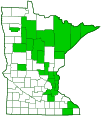Snowy Waxcap
(Cuphophyllus virgineus)
Conservation • Description • Habitat • Ecology • Distribution • Taxonomy
|
|
||||||||||||||
Description |
Snowy Waxcap is a common, widespread, gilled mushroom. It occurs in Europe, Asia, North America, and Australia. In the United States, it occurs in the east from Maine to New Jersey, west to Minnesota and Indiana, and south along the Appalachian Mountains to northern Georgia. In the west it occurs along the coast from northern Washington to central California. Snowy Waxcap is found in summer and fall in woodlands, scattered or in groups but not clustered (gregarious). It grows on the ground under hardwoods or conifers. The ecology is uncertain. In Europe it is found in grasslands, where it may obtain its nutrients from decaying organic matter (saprobic). In North America it is found in woodlands, where it may be attached to and obtain its nutrients from the rootlets of trees (mycorrhizal). When it first appears, the cap is moist, convex, and white. There is a weak, raised projection in the middle (umbonate), and the margins are turned inward. As it ages it spreads out and it dries out, and the tissue changes color as it dries (hygrophanous). The mature cap is ⅜″ to 2″ (1 to 5 cm) in diameter and broadly convex to almost flat or slightly depressed in the middle. It is dry, hairless, and free of scales (bald). It is white to ivory with a brownish area in the middle. The margins are flat. The gills are moderately or widely spaced, and they run down the stalk (decurrent). They are white at first, becoming pale yellowish with age. Between the main gills there are frequent short gills that do not reach the stalk. The stalk is ¾″ to 4¾″ (2 to 12 cm) long and ⅛″ to ⅜″ (3 to 10 mm) thick. It is white and solid at first, becoming brownish near the base, and hollow but stuffed as it ages. The flesh is white, soft, and watery. It does not change color when sliced. It is edible but it has a mild taste, sometimes described as flavorless. The spore print is white. |
Similar Species |
Habitat and Hosts |
Woodlands beneath hardwood an coniferous trees |
Ecology |
Season |
Summer and fall |
Distribution |
||
|
Sources |
|
| 9/9/2024 | ||
Occurrence |
||
Common |
||
Taxonomy |
|
Kingdom |
Fungi (Fungi) |
Subkingdom |
Dikarya |
Phylum |
Basidiomycota (Basidiomycete Fungi) |
Subphylum |
Agaricomycotina (Higher Basidiomycetes) |
Class |
Agaricomycetes (Mushrooms, Bracket Fungi, Puffballs, and Allies) |
Subclass |
Agaricomycetidae |
Order |
|
Suborder |
Hygrophorineae |
Family |
Hygrophoraceae (waxcaps and allies) |
Subfamily |
Cuphophylloideae |
Genus |
Cuphophyllus (waxcaps) |
Section |
Virginei |
Subordinate Taxa |
|
Snowy Waxcap (Cuphophyllus virgineus var. fuscescens) Snowy Waxcap (Cuphophyllus virgineus var. ochraceopallidus) Snowy Waxcap (Cuphophyllus virgineus var. virgineus) |
|
Synonyms |
|
Agaricus virgineus Camarophyllus niveus Camarophyllus virgineus Hygrocybe nivea Hygrocybe virginea Hygrophorus subradiatus Hygrocybe virginea Hygrophorus virgineus |
|
Common Names |
|
Snowy Waxcap |
|
Glossary
Decurrent
Extending down the stem from the point of attachment, as with leaf blades and mushroom gills.
Hygrophanous
Referring to mushroom tissue that is dark and more or less transparent when moist, becoming paler and opaque as it dries out.
Mycorrhizal
A symbiotic, usually beneficial relationship between a fungus and the tiny rootlets of a plant, usually a tree.
Saprobic
A term often used for saprotrophic fungi. Referring to fungi that obtain their nutrients from decayed organic matter.
Umbonate
On mushrooms, having a distinct, raised, knob-like projection in the center of the cap.
Visitor Photos |
||
Share your photo of this fungus. |
||
This button not working for you? |
||
Paul |
||
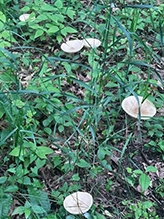 |
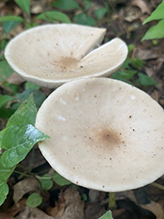 |
|
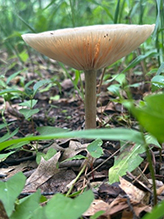 |
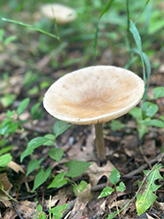 |
|
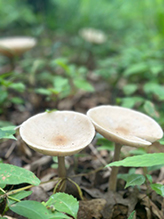 |
|
|
MinnesotaSeasons.com Photos |
||
|
||
|
||

Slideshows |
|

Visitor Videos |
||
Share your video of this fungus. |
||
This button not working for you? |
||
|
Other Videos |
||
Snowy Waxcap - Cuphophyllus virgineus - Snæhnúfa - Villtir sveppir - Sveppaaldin |
About
Nov 20, 2018 Snowy waxcap - Cuphophyllus virgineus / Hygrocybe virginea - Hygrocybe nivea - Glasigweißer Ellerling - Hygrophoraceae - Snæhnúfa - Sniglingsætt - Grassveppir - Sveppaflóra - Sveppir - Careful identification required as there are some highly toxic lookalikes. Þrátt fyrir að flestir sveppir í þessari ætt eru eitraðir eru nokkrir sem eru varasamir þótt þeir eru ekki hættulega eitraðir sveppir - eða lífshættulegir þá geta þeir bæði valdið veikindum og eins verið ruglað saman við eitraða ættingja sem líta mjög líkt út og auðvelt að ruglast á - jafnvel fyrir vant sveppatínslufólk. The snowy waxcap is widespread throughout the north temperate zone, occurring in Europe, North America, and northern Asia, and has also been recorded from Australia. Sveppir (Fungi) Ólíkt plöntum eru þeir ófrumbjarga lífverur, það er þeir geta ekki ljóstillífað og myndað sína eigin næringu. Sveppir eru rotverur og nærast á dauðum plöntu og dýraleyfum. Sveppir á Íslandi: Hér er aðallega stuðst við Sveppabókina eftir Helga Hallgrímsson. Lesa meira: https://is.wikipedia.org/wiki/Notandi:Akigka/Sveppir_%C3%A1_%C3%8Dslandi Like other waxcaps, it grows in old, unimproved, short-sward grassland (pastures and lawns) in Europe, but in woodland elsewhere. Recent research suggests waxcaps are neither mycorrhizal nor saprotrophic but may be associated with mosses. Cuphophyllus is a genus of agaric fungi in the family Hygrophoraceae. Cuphophyllus species belong to a group known as waxcaps in English, sometimes also waxy caps in North America or waxgills in New Zealand. See more: https://en.wikipedia.org/wiki/Cuphophyllus Not all waxcaps are edible (though none are known to be dangerously poisonous) and those that are don’t quite manage a place at the top edible mushroom table. The very waxiness that earns them their name, combined with a tendency towards sliminess in wet weather isn’t the most appealing combination. Nevertheless, for culinary and conservation reasons, I advocate eating only three species in any quantity: meadow waxcaps (Cuphophyllus pratensis, though many textbooks still list them as hygrocybe pratensis), crimson waxcaps (h. punicea) and snowy wax caps (Cuphophyllus virgineus). Do be careful if you want to pick snowy waxcaps – although they are very common, they are quite similar to a few very poisonous small, white clitocybe species – notably fool’s funnel (c.rivulosa) and c.dealbata (no common name). See more: https://gallowaywildfoods.com/november-waxcaps/ |

Visitor Sightings |
||
Report a sighting of this fungus. |
||
This button not working for you? |
||
|
|
MinnesotaSeasons.com Sightings |
||
|

|
Created: 9/9/2024 Last Updated: © MinnesotaSeasons.com. All rights reserved. |
